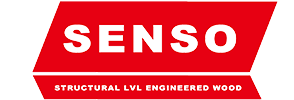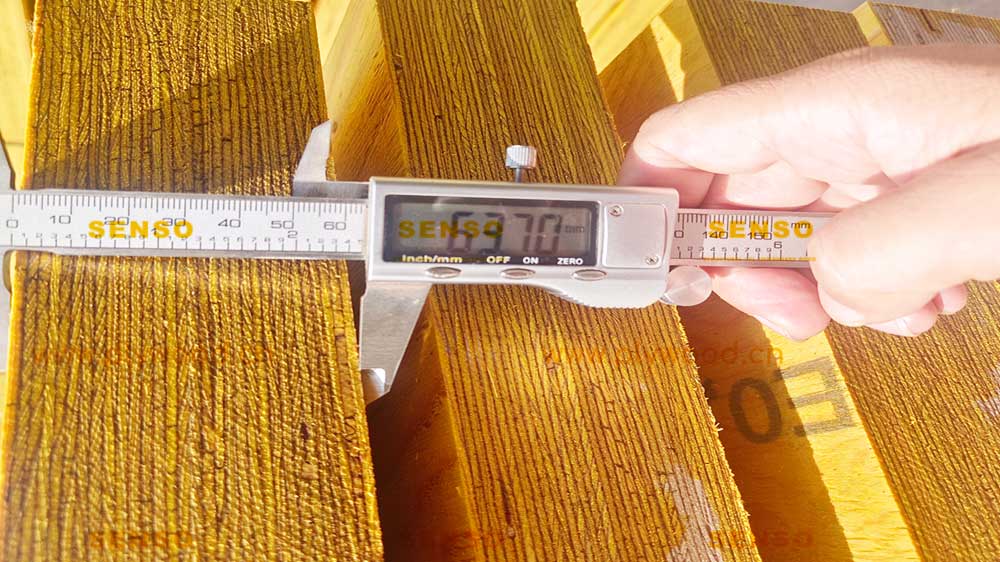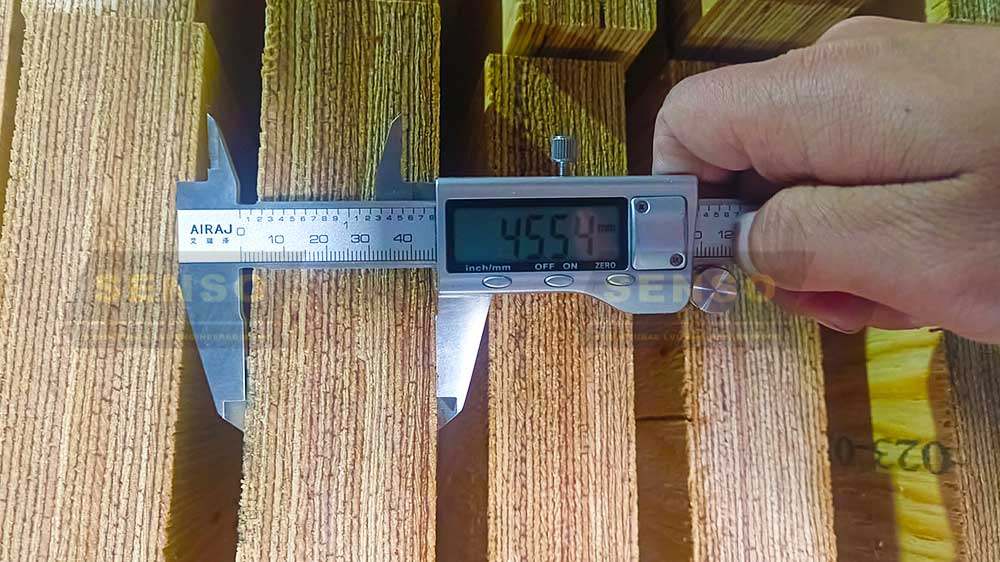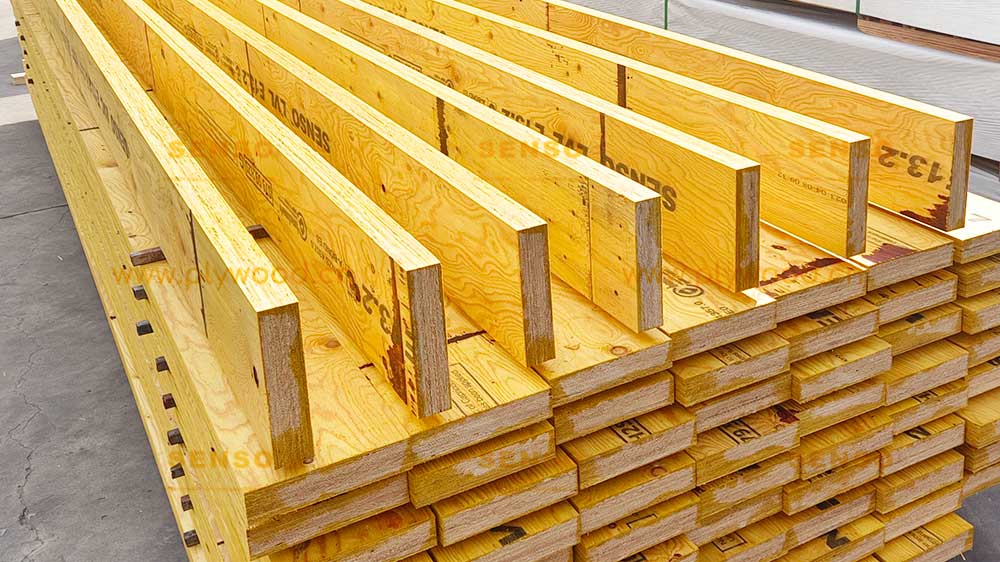FWhat are Timber Frame Trusses?
Timber frame trusses are an essential component in construction, offering both structural support and visual appeal. They are designed to span large spaces while providing strength, stability, and an aesthetically pleasing appearance. These trusses are used in roofs, ceilings, and large open spaces. They provide support without needing interior walls or columns. Timber frame trusses are common in residential and commercial construction projects. Their versatility makes them a popular choice among modern builders.
Made from high-quality timber, timber frame trusses are often paired with engineered wood products such as LVL beams (laminated veneer lumber) and other wood beams. These materials work together to create a framework that supports the building’s roof and walls, ensuring long-term durability. LVL beam, in particular, are known for their strength and reliability, making them a popular choice in contemporary framing systems. The combination of timber beams and LVL beams allows builders to create large, open spaces while maintaining the structural integrity of the building.
In terms of design, timber frame trusses can be customized to suit a wide range of architectural styles. Whether you’re looking for a rustic, traditional look or a sleek, modern design, timber trusses can be tailored to fit your vision. Their ability to combine function and form has made timber frame trusses a favorite among architects and builders alike. As construction trends continue to shift toward sustainability and eco-friendly practices, timber frame trusses remain a leading choice for green building projects due to their renewable material and minimal environmental impact.
The Rise of Timber Frame Trusses in Modern Construction
Timber frame trusses have seen a resurgence in modern construction, thanks to their versatility, sustainability, and aesthetic appeal. As building designs evolve, architects and builders are using timber beams and framing LVL more frequently. These materials help create both functional and visually striking structures. Timber frame trusses offer a perfect balance between strength and beauty. This combination makes them ideal for modern, eco-friendly construction. Their use aligns well with today’s environmentally conscious practices.
Sustainability in Timber Construction
One of the key reasons for the growing popularity of timber frame trusses is their sustainability. Timber is a renewable resource, making it an eco-friendly option for construction. When sourced from responsibly managed forests, timber beams have a much lower environmental impact compared to steel or concrete. Additionally, wood beam trusses can be recycled or repurposed at the end of their life cycle, further reducing waste.
LVL beams are also gaining recognition for their sustainability. Made from thin layers of wood veneer bonded together with adhesives, LVL beams use less raw material than solid wood while offering superior strength. This manufacturing process maximizes the use of available wood and minimizes waste, contributing to a more sustainable construction process.
As sustainability becomes a top priority for builders and developers, timber frame trusses and LVL beams are leading the charge in reducing the carbon footprint of construction projects. Their renewable nature, combined with their ability to create strong, long-lasting structures, makes them an ideal choice for eco-friendly buildings.
Timber Frame Trusses vs. Traditional Framing Methods
When it comes to framing a building, there are several methods available, each with its own advantages and drawbacks. Traditional framing methods, such as stick framing with dimensional lumber, are still widely used in residential construction. However, timber frame trusses and LVL beams offer several key advantages over traditional framing techniques.
Strength and Stability
Timber frame trusses are designed to support large spans without the need for interior walls or support columns. This creates more open floor plans and allows for greater flexibility in architectural design. Using LVL beams alongside timber trusses increases the strength and stability of the structure. LVL beams are designed to handle high loads effectively. They are also resistant to warping or twisting over time. This combination ensures long-lasting structural integrity.
In contrast, traditional stick framing relies on dimensional lumber, which can be prone to shifting, settling, and warping over time. This can lead to structural issues that require costly repairs or adjustments. Timber frame trusses, on the other hand, provide a more stable and long-lasting framework, making them a better choice for large or complex projects.
Aesthetic Appeal
Another advantage of timber beams trusses is their aesthetic appeal. Timber beams bring warmth and character to a building. They create a natural, organic look that fits modern and traditional styles. Exposed timber trusses often serve as design elements in open-concept spaces. These trusses highlight the craftsmanship and beauty of the wood.
Traditional framing methods, while functional, do not offer the same level of visual interest as timber frame trusses. Builders who want to create a distinctive, high-end look often choose timber beams for their ability to elevate the overall design of a space.
The Role of LVL Beams in Timber Frame Trusses
LVL beams have become a staple in modern construction, particularly in timber frame designs. These engineered wood beams offer several advantages over traditional solid wood beams, making them a popular choice for builders who need strength and precision in their framing systems.
What are LVL Beams?
LVL beams, or laminated veneer lumber beams, are made by layering thin sheets of wood veneer and bonding them together with adhesives. This process creates a strong, stable beam that is resistant to warping, shrinking, and splitting. LVL beams are often used in conjunction with framing LVL trusses to provide additional support and stability in large spans.
Unlike solid wood beams, which can vary in quality depending on the grain and knots, LVL beams are engineered for consistency. This makes them more reliable for structural applications, as each beam is manufactured to meet specific load-bearing requirements. Builders can rely on LVL beams to perform consistently, regardless of the size or complexity of the project.
Benefits of Using LVL Beams in Timber Frame Construction
One of the main benefits of using LVL beams in timber frame trusses is their strength-to-weight ratio. LVL beams are incredibly strong relative to their weight, making them ideal for large spans where traditional wood beams might sag or bend under the load. This allows builders to create more open floor plans and taller ceilings without sacrificing structural integrity.
In addition to their strength, LVL beams are also more dimensionally stable than traditional wood beams. LVL beams are engineered to resist warping and twisting. This makes them a more precise and stable framework for timber trusses. Precision is crucial in large commercial projects. Even small variations in beam alignment can cause structural issues.
Timber Frame Trusses in Residential and Commercial Projects
Timber frame trusses are used in a wide range of building projects, from small residential homes to large commercial developments. Their versatility, strength, and aesthetic appeal make them a popular choice for architects and builders who want to create distinctive, high-quality structures.
Residential Applications
In residential construction, wood beam trusses help create open-concept living spaces. They are often used to support vaulted ceilings with exposed wood beams. These trusses provide essential structural support for the roof. At the same time, they serve as a design element. The exposed wood beam add character and warmth to the home.
Homeowners who want a rustic, natural look often choose timber beams for their ceilings, creating a cozy, inviting atmosphere. Timber frame trusses can be customized to fit any architectural style, whether it’s a modern farmhouse or a traditional craftsman home.
LVL beams are frequently used in residential construction to support second-story floors or long roof spans. Their strength and stability make them an ideal choice for homes with large, open floor plans, where traditional wood beams might not be strong enough to handle the load.
Commercial Applications
In commercial construction, timber frame trusses are commonly used in large buildings such as churches, schools, and event spaces. The ability to span large distances without the need for interior columns makes timber trusses a practical solution for creating open, unobstructed spaces.
Commercial developers also appreciate the aesthetic value of timber beams, which can enhance the overall design of a building. Exposed timber trusses are often used as a focal point in commercial spaces, creating a sense of grandeur and craftsmanship that sets the building apart.
LVL beams are essential in commercial timber frame construction. They provide the strength needed to support large roofs and multi-story buildings. Their consistent quality ensures reliable performance. These beams offer high load-bearing capacity, meeting the demands of heavy structures. Builders trust LVL beams to comply with strict building codes. They are also designed to meet safety standards, making them a dependable choice.
Timber Frame Trusses in Modern Architectural Trends
As architectural design trends evolve, timber frame trusses play a key role in modern buildings. The focus on sustainability has driven their resurgence. Open spaces and natural materials are also contributing factors. Timber beams and LVL beams are popular in both residential and commercial projects. These structures provide more than just strength and stability. They blend harmoniously with nature, adding warmth and character. Timber frame buildings create inviting spaces connected to the environment. This combination of function and beauty makes them highly valued.
Sustainable Design with Timber Beams
Sustainability is one of the driving forces behind the increasing use of timber frame trusses in construction. Timber is a renewable resource. When sourced from certified, responsibly managed forests, it offers a low environmental impact. Compared to steel or concrete, timber is a more sustainable option. Timber has a smaller carbon footprint during production, transportation, and installation. This makes it an eco-friendly choice for builders and architects. Timber beams and LVL beams help meet green building standards. Certifications like FSC or PEFC value the use of sustainable materials.
Incorporating timber frame trusses into modern designs aligns with biophilic design trends. Biophilic design emphasizes the connection between buildings and nature. Timber beams bring natural elements into the built environment. This creates spaces that are both structurally sound and aesthetically pleasing. These spaces also offer psychological benefits, enhancing well-being. Studies have shown that buildings with natural materials, such as wood, can improve occupant well-being, reduce stress, and enhance productivity.
Timber Frame Trusses in Contemporary Designs
Timber frame trusses have a long history in traditional and rustic architecture. They are now becoming a staple in contemporary designs as well. Modern architects are integrating exposed timber beams into sleek, minimalist spaces. The natural beauty of wood adds warmth and texture to interiors. This approach balances the starkness of modern designs, creating inviting spaces.
The combination of timber beams trusses and open floor plans is a hallmark of contemporary architecture. Timber beams allow for expansive, column-free spaces that are perfect for creating open, airy environments. These spaces are often filled with natural light, enhancing the visual appeal of the exposed wood and creating a sense of openness and freedom.
In commercial buildings, timber frame trusses are often used in lobbies, atriums, and event spaces. They help create a grand, welcoming atmosphere. The natural aesthetic of timber beams contrasts beautifully with modern materials like glass and steel. This combination results in a unique and timeless design. It appeals to both traditionalists and modernists alike.
Timber Frame Trusses and the Future of Construction
As construction techniques evolve, framing LVL trusses are expected to play a larger role in the industry’s future. Advances in engineered wood products, including LVL beams, are driving this shift. These innovations make it possible to build stronger, more efficient, and more sustainable structures using timber. New developments are opening exciting possibilities for architects and builders. They can now push the boundaries of design while maintaining high standards of structural integrity.
Engineered Wood Products and Timber Frame Trusses
One of the most exciting developments in timber frame construction is the growing use of engineered wood products. Structural LVL beams and cross-laminated timber (CLT) are leading this transformation. These materials are revolutionizing the construction industry by offering superior strength and stability. They outperform traditional wood while being more sustainable and cost-effective.
LVL beams, in particular, have become an essential component in timber frame trusses due to their high load-bearing capacity and resistance to warping. This makes them ideal for large-scale projects where traditional timber might not be able to handle the weight or span. In combination with timber beams, LVL beams allow for greater design flexibility, enabling architects to create larger, more open spaces without compromising on safety or durability.
Cross-laminated timber (CLT) is another innovative material that is gaining popularity in the construction of timber frame buildings. Like LVL beams, CLT is made from layers of wood bonded together to create a strong, stable panel. However, CLT is typically used for walls and floors, making it a complementary product to LVL beams in timber frame truss systems. Together, these engineered wood products are helping to drive the future of timber construction.
Digital Tools and Timber Frame Design
The future of timber frame trusses is also being shaped by advancements in digital design tools. Building Information Modeling (BIM) and computer-aided design (CAD) software are transforming timber frame construction. These tools make it easier for architects and engineers to design complex structures with precision. Builders can use them to simulate how timber beams and LVL beams will perform under various conditions. This ensures the final structure meets all safety and performance standards.
Digital tools are also helping to streamline the construction process. With the use of prefabrication and modular construction techniques, timber frame trusses can be manufactured off-site and then assembled on-site, reducing labor costs and construction time. This approach is particularly beneficial for large-scale commercial projects, where speed and efficiency are critical to meeting deadlines and budgets.
FAQs about Timber Frame Trusses
Q: What are the main benefits of using timber frame trusses in construction?
A: Timber frame trusses offer numerous benefits, including strength, sustainability, and aesthetic appeal. They allow for large, open spaces without the need for interior support columns, and they can be customized to suit a wide range of architectural styles.
Q: How do LVL beams compare to traditional wood beams in timber frame construction?
A: LVL beams are stronger and more stable than traditional wood beams, making them ideal for large spans and load-bearing applications. They are engineered to resist warping, twisting, and shrinking, ensuring long-term performance.
Q: Can timber frame trusses be used in commercial buildings?
A: Yes, timber frame trusses are commonly used in commercial buildings such as churches, schools, and event spaces. They provide the necessary structural support for large, open spaces while adding aesthetic value to the design.
Q: Are timber frame trusses environmentally friendly?
A: Timber frame trusses are considered environmentally friendly because timber is a renewable resource. When sourced from responsibly managed forests, timber beams have a lower environmental impact than other building materials like steel or concrete.
Q: What is the role of engineered wood products like LVL beams in timber frame construction?
A: Engineered wood products like LVL beams play a crucial role in timber frame construction by providing additional strength and stability. LVL beams are used to support large spans and resist warping, ensuring the structural integrity of the building.
Q: Can timber frame trusses be used in modern architectural designs?
A: Yes, timber frame trusses are increasingly being used in modern architectural designs. Their natural beauty and ability to create open, column-free spaces make them a popular choice for contemporary buildings.
Post time: Oct-19-2024




